Cooking spaghetti Bolognese in a way that Jamie Oliver cooks, is the ultimate option for many pasta consumers all over the globe. An Italian-inspired classic, spaghetti Bolognese has become a go-to meal for families all over the world throughout the years.
Although spaghetti Bolognese is frequently linked with Italy, it really has non-Italian origins. Instead, it’s a distorted version of the beloved ragù alla bolognese in the northern city of Bologna, which is popular in the UK and the US.
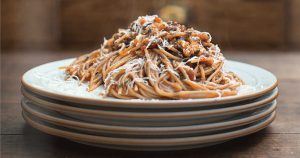
spaghetti Bolognese recipe
Spaghetti Bolognese recipes traditionally have more in common with Neapolitan ragù and are said to have developed in the context of southern Italian immigrants to the United States in the early 20th century. The meal is also cooked for a lot less time than traditional ragù and is typically made with beef mince, tomatoes, garlic, and a variety of herbs.
To make a nice spaghetti Bolognese dish, you will need ingredients such as salt, pepper, sugar, vegetable or olive oil, a deep pan, a colander, and a grater. Instructions for this recipe are as follows: On a coarse-mesh grater, shred the carrots after peeling them. Peel the onion, then cut it into little cubes. Garlic should be chopped into tiny bits.
The onion should be sautéed in a large frying pan with 1 to 2 tablespoons of oil for around 3 minutes. With periodic tossing, add the grated carrots and cook for about three minutes.
The minced meat, garlic, chili, salt, and pepper, to taste, are then added, and the mixture is sautéed until the flesh is cooked (approx. 7 minutes). The tomato passata should be added, stirred, and covered for 15 minutes of simmering. After 15 minutes, stir and continue to simmer for 5 more minutes while adding the balsamic vinegar, herbs, salt, and sugar to taste.
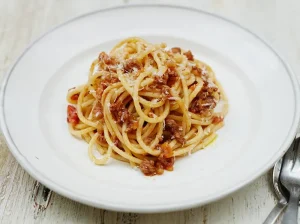
Boil one liter of water in a large saucepan. Add 1 tbsp of olive oil and 1 tbsp of salt. In the boiling water, add the pasta, and cook for about 8 minutes. Pour warm water after straining in a strainer.
Use a fine-mesh grater to shred the cheese. Fill deep dishes with the cooked spaghetti. Over the spaghetti, liberally pour the sauce and top with the shredded cheese.
Jamie Oliver, a British chef who was born in Clavering, Essex, England on May 27, 1975, rose to prominence both as the host of the television series Jamie Oliver’s Food Revolution (2010–11) and as the author of several cookbooks with a range of gastronomic subjects.
In Clavering, Essex, Oliver’s parents managed a bar restaurant. He was permitted to help in the kitchen after pleading with the chefs to let him. Oliver enrolled at the Westminster Catering College at the age of 16, then went to France for more education and training.
His first position in London was as head pastry chef at the Neal Street Restaurant, and he soon started working as a sous-cook at the River Café. You can buy all kinds of pasta directly from our supplying center in order to have a good, efficient and economical purchase.
Jamie Oliver spaghetti Bolognese
Italian Bolognese is comparable to Jamie Oliver’s Spaghetti Bolognese, however, Jamie Oliver has improved upon the original recipe by making it even more wholesome and delectable. Let’s look at how to prepare this fantastic cuisine at home like Jamie Oliver.
Chopping the vegetables is the first step in creating Jamie Oliver’s spaghetti, Bolognese. Cook the bacon first, then the beef mince with the tomato, tomato puree, and vegetables.
After that, make the Bolognese sauce by using stock and water. Boil the pasta last, then combine with the sauce. When the parmesan cheese is added, the dish is finished.
Ingredients that are necessary to make this recipe:
Lean Beef: Bolognese wouldn’t be the same without meat. In order to enjoy the sauce, add some meat.
Dried spaghetti: Prepare the lengthy, silky strands of pasta for a fantastic supper.
Red onions and garlic: Use them to give your pasta a strong, earthy Allum taste.
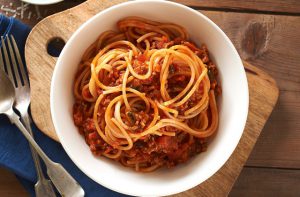
Add the veggie and herb goodness to the spaghetti with celery, carrots, and fresh rosemary.
Olive oil: Use this to cook your meat and vegetables.
Tomatoes and tomato purée are other essential components in Bolognese sauce.
Bay Leaves: Add some bay leaves to the sauce for a warm and spicy flavor.
Organic Low-Salt Beef Stock Cube: To give your pasta flavor, warm the stock and add it to the sauce.
Last but not least, generously sprinkle parmesan cheese over the spaghetti to complete it.
What Kitchenware Is Necessary?
Make the sauce in the pot, as the name says. Large Pot: Use the large pot to boil the pasta. Kettle: Boil the stick and keep it warm there until you need it. Colander: Use this colander to drain your pasta. Utilize the knife for slicing, the spatula for stirring, the spoon for mixing, and the ladle for ladling.
vegetarian spaghetti Bolognese
There are delicious recipes for vegetarian low-fat, and calorie-dense spaghetti Bolognese, make the most of vegetarian mince. A vegetarian or vegan “meatloaf” can be made using onions and mushrooms in a variety of ways for meaty tastes and textures.
The meatless mince from Quorn is incredibly adaptable. Our vegetarian mince may be used to create a variety of delectable, nutritious dishes. You can cook all of these dishes using Quorn, whether you’re in the mood for a substantial Bolognese, a fiery chili, or even some juicy burgers. Additionally, it has a low saturated fat content, a high protein content, and just 92 calories per serving.
I knew I would have to master a vegetarian version of spaghetti Bolognese to add to my collection of go-to midweek dinners, along with these veggie burgers and this vegetable curry, when we started eating less meat.
Because of the thick sauce and noodles, this vegetarian pasta dish may simply be converted to veganism by omitting the parmesan rind. It’s also lighter than many vegetarian Bolognese recipes because it only utilizes mushrooms and omits lentils.
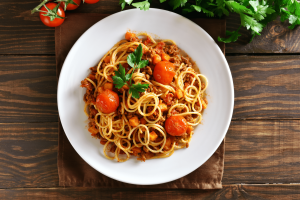
Finally, because it’s so simple to prepare, you could definitely make it on a weeknight. It also works fantastically for dinner preparation.
In this mushroom Bolognese, you can use whichever mushrooms you desire. I used chestnut, which adds a nice flavor, but a button or a combination of both would also work well.
To make this Bolognese even more substantial, you might add some red lentils in addition to the chopped tomatoes.
Use your preferred brand of gluten-free spaghetti with this Bolognese recipe if you’d like. It’s strongly recommended to add the parmesan rind since it gives the dish an incredible umami flavor.
Add more vegetables, such as spinach, kale, or broccoli, to this dish to make it more filling.
lentil spaghetti Bolognese
In less than 30 minutes, you can prepare a tasty, nutritious, and filling vegan lentil spaghetti Bolognese that is rich with veggies and mushrooms. It can be made gluten-free and is soy-free, nut-free, and nut-free. Perfect for preparing meals for lunch and dinner. This dish is vegetarian, Easy to prepare and healthy, flavorful hearty high in fiber and protein, Full of Vegetables
For the lentil Bolognese sauce, you’ll need:
1 tablespoon of olive oil
Red lentils, 4.44 ounces (125 g)
one sliced onion
1 sliced carrot
4 oz (100 g) of chopped mushrooms
2 minced garlic cloves
1-tablespoon tomato paste
9 oz. (250 g) of strained tomatoes plus 7 oz. (200 g) of diced tomatoes plus 1 cup of vegetable broth (250 ml)
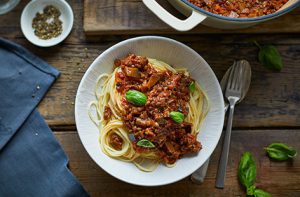
2/tsp of Italian spices
1 teaspoon raw cane sugar
Pepper and salt
Additional ingredients:
9 oz (125 g) of spaghetti
fresh herbs of choice, vegan parmesan, or nutritional yeast flakes.
Instructions: Over medium heat, warm oil in a skillet. Add the onion and cook for approximately 2 minutes, or until transparent.
Add the salt, pepper, mushrooms, and carrots. About 5-7 minutes of sautéing are required to get the mushrooms to simmer down and turn golden.
Include garlic, spices, and tomato paste. Continue to roast for another 1-2 minutes.
After that, mix the lentils, tomatoes, and vegetable broth. When the lentils are ready and the Bolognese sauce has thickened, bring to a boil, cover, lower the heat, and simmer for approximately 15 to 20 minutes. If necessary, add additional water to adjust consistency. Upon tasting, adjust the spices, salt, and pepper.
Cook the spaghetti in salted water until it is al dente in the interim, then drain. Over the pasta, spoon the lentil Bolognese sauce. If desired, garnish with vegan parmesan cheese, yeast flakes, and fresh herbs.
Quorn spaghetti Bolognese
Vegetarian recipes for spaghetti Bolognese are using Quorn, lentils and etc. to substitute for meat.
To cook one, follow these steps: Put the lentils in a small pan with the water, cover, and heat until boiling. Cook for 12 minutes, or until the food is cooked. After draining, add the food back to the pan and season with a little sea salt, black pepper, and olive oil.
Place the porcini in a small dish, pour with just enough boiling water to cover, and set aside to rehydrate. Trim the celery, peel the onion, and garlic, and cut everything.
In a medium skillet, add the chopped vegetables, bay leaves, and rosemary. Cover and simmer gently for 10 minutes, or until the vegetables are softened, stirring periodically.
Porcini should be chopped finely before being added to the pan.
Add half a tin of water after adding the tomatoes and breaking them up with a spoon as you go. Add the lentils as soon as they are prepared and drain after bringing to a boil, then simmer for 10 minutes.
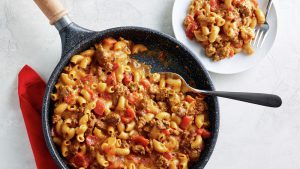
The spaghetti should be soft enough to eat but still have some bite and stiffness, so cook it for 8 to 10 minutes, or until it is al dente, in a pan of boiling, salted water. For al dente cook the spaghetti in a pan of boiling, salted water for 8 minutes.
Next, add the breadcrumbs and 1/2 tsp. extra virgin olive oil. Toss to combine. Stirring often, toast in a dry frying pan over medium heat until gently brown.
With a potato masher, carefully mash the sauce after removing the bay leaf. Add salt and pepper.
Drain the spaghetti, then pour it back into the pan with a cup that has been scooped off and set aside. Add the sauce and combine.
500 600 calorie spaghetti Bolognese
People who care about the calories, choose the spaghetti Bolognese recipe that contains 500 to 600 calories. Pasta is a low-fat, low-sodium pasta that is ideal for delivering healthful nutrients. It’s easy to prepare dishes with fewer calories.
Replace 1/4 to 1/2 of the pasta called for in the recipe with the equivalent number of vegetables to help lower the calorie count of your favorite pasta recipes. For instance, if a dish asks for two cups of cooked pasta, substitute steamed broccoli and red pepper or zucchini and basil.
This recipe has only 14 ingredients and is low in calories. 200g of chickpea pasta, 120g (3/4 cup) iced peas, 150 grams of diagonally snap peas, 250g of finely sliced chicken breast fillet, 12 cherry tomatoes, 3 smashed garlic cloves, 1/8 teaspoon of chili flakes, Lemon rind, grated, 2 teaspoons, 60ml (1/4 cup) of one egg cooking cream, 2 Fresh lemons, 1/2 tbsp, 25g (1/3 cup) 80g of parmesan rocket
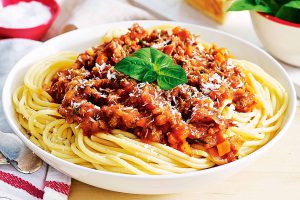
Using the instructions on the box, prepare the pasta in a pot of salted water until al dente, adding the peas and sugar snap peas for the final cooking. Save 60ml (1/4 cup) of the pasta boiling water.
A big nonstick frying pan should be heated with the oil. Sauté the chicken and tomatoes for a further two minutes, or until the chicken is cooked and the tomatoes have softened. Stirring often, sauté the garlic, red pepper flakes, and lemon rind for one minute.
Combine in a jug the egg, cream, lemon juice, and half the parmesan. To the heated pasta, add the chicken mixture and egg mixture. A little of the saved cooking liquid may be added as you quickly toss it to coat with the sauce. To blend, add the rocket. Sprinkle the remaining parmesan over the spaghetti.

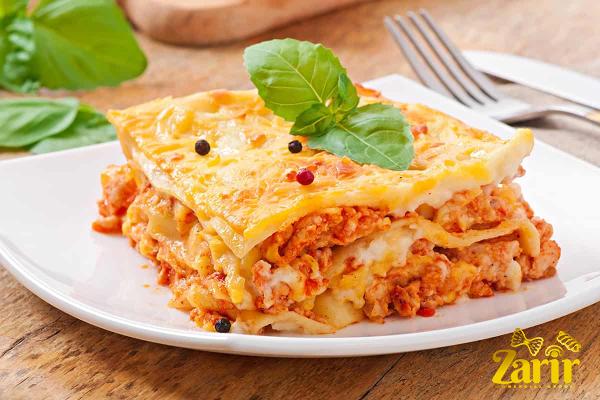
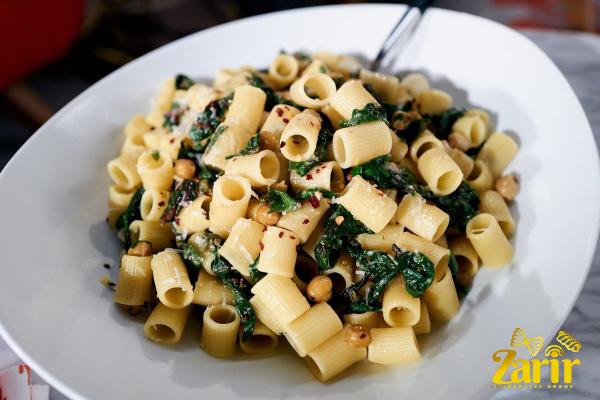
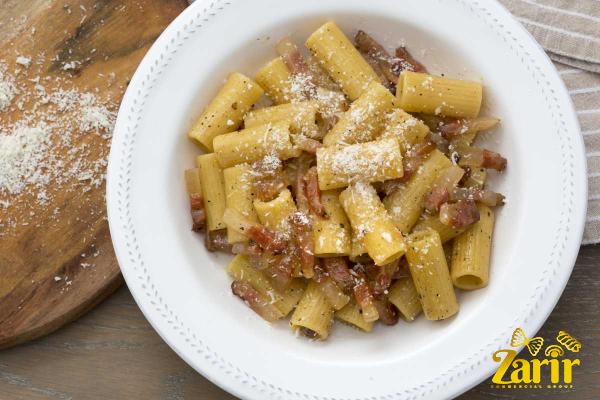
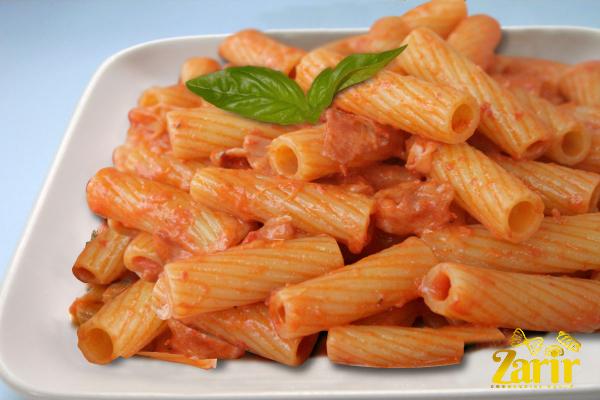
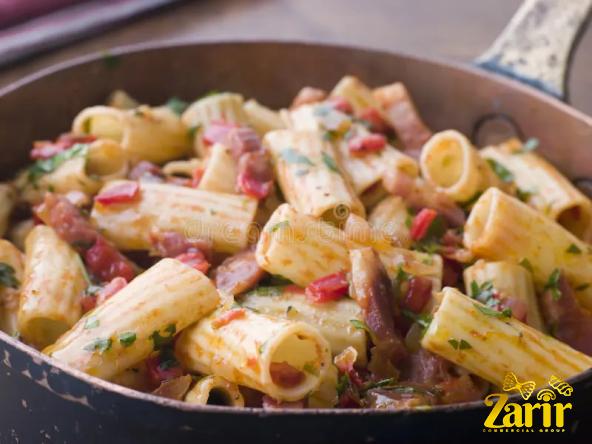
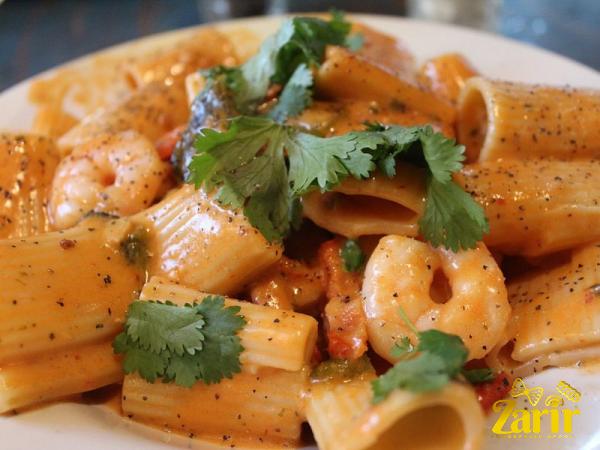
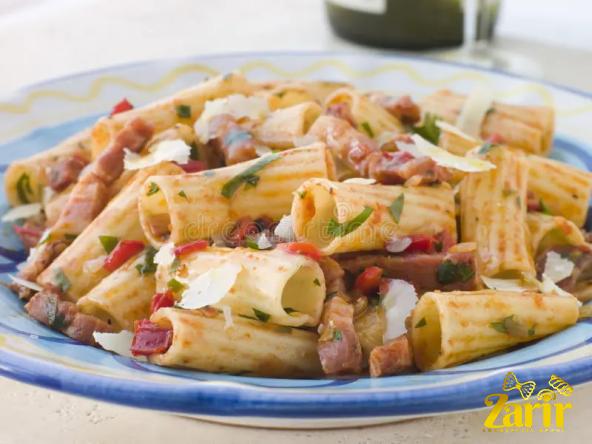
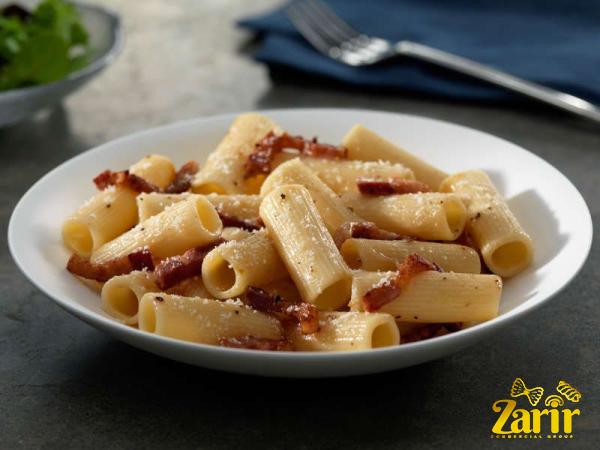
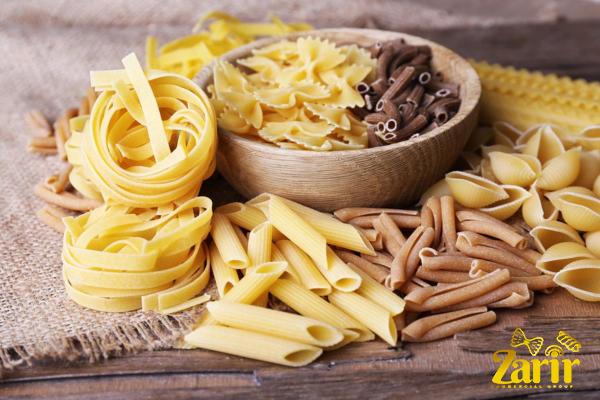
Your comment submitted.